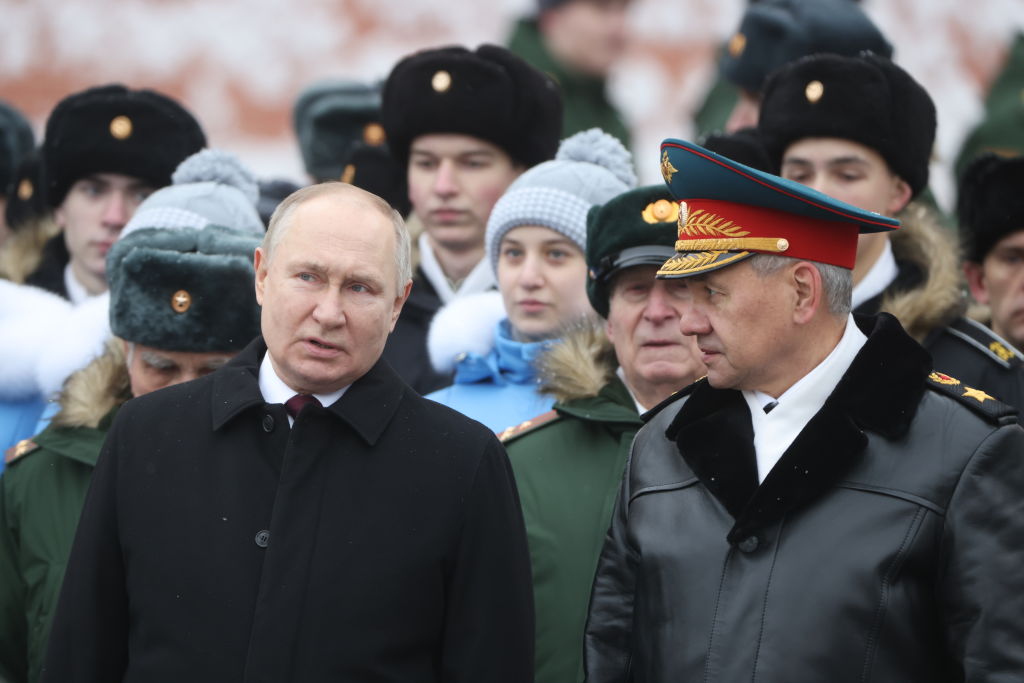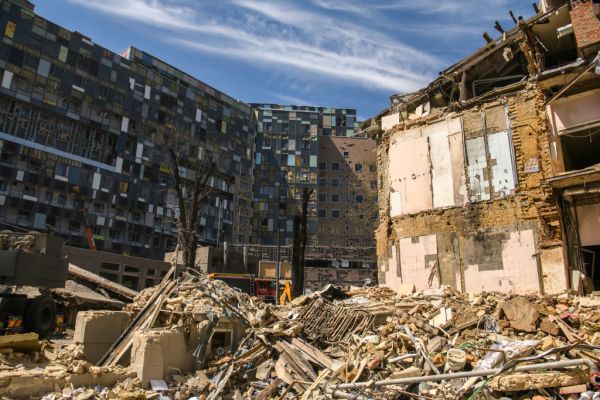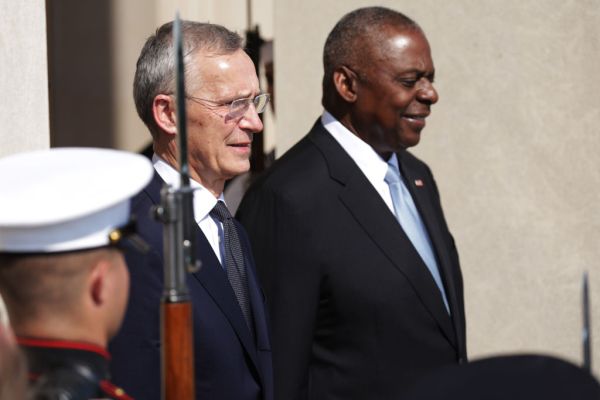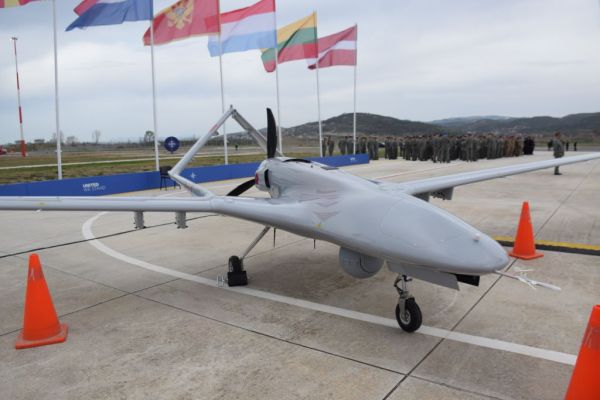Seeking a revanche for what its leaders consider a catastrophic national defeat, a large and powerful country invades a much smaller neighbor under the pretext of saving ethnic brethren from allegedly systematic murderous assaults. The aggressor also declares its ultimate goal to be overturning the “world dominance” of “Anglo-Saxon international capitalists.”
Substitute the Cold War for World War I, Ukraine for Czechoslovakia, ethnic Russians in southeast Ukraine for Sudetenland Germans, and the U.S. and its allies for the “Anglo-Saxons”—and Vladimir Putin’s war eerily resembles Hitler’s prelude to World War II. Historical parallels must be taken with a large grain of salt, but so uncanny a coincidence hangs darkly over the war’s third year.
No one can predict what happens in the next 12 months, but we can handicap Year III by assessing the likely behavior of the three key actors of the enduring geopolitical tragedy: Ukraine, Russia, and the West.
Ukraine is weighed down by a host of serious martial and political problems. It is outmanned and outgunned. Soldiers have to ration ammunition, including 155mm shells, which are critically important in the incessant artillery duels with Russian troops. With some of the frontline units down to 20 percent of their normal strength, Kyiv may need to mobilize hundreds of thousands of reservists while the government lacks the money to pay their salaries and draft evasion becomes an issue.
The absence of significant battlefield progress inevitably saps support for charismatic President Volodymyr Zelensky and constrains his ability to act at a time when he faces tough choices, including lowering the mobilization age from 27 to 25 years and raising taxes to continue to pay soldiers. He is still popular with the majority of the Ukrainians, yet their trust in him is down from 84 percent in December 2022 to 62 percent two months ago. One factor diminishing Zelensky’s standing was the departure of the popular commander-in-chief Valerii Zalyuzhnyi, whose firing by Zelensky did not go down well either with the army or the public at large.
Still, almost two-thirds of Ukrainians are in favor of battling Russia until all of the occupied territory is liberated, so long as the money and armaments continue to trickle from the West. And so in 2024 the Ukrainian army will carry on, trying to hold the line along the 600-mile front.
Russia’s key challenge in the coming year is to keep social peace while paying for the war and sending hundreds of thousands of men to be maimed and killed in Ukraine. Costing Russia an estimated $300 million a day, the war, which already consumes almost 40 percent of the country’s budget, will become more expensive still in 2024. According to the Russian finance ministry, spending on “defense and security” is set to increase by 68 percent. With trillions of rubles thrown at the military industrial complex, the prices of core foodstuffs and daily necessities are up 23 percent year-on-year, and inflation will continue to rise, despite the Central Bank’s 16-percent prime rate.
With an estimated 50,000 killed or wounded every six months, Russia’s astronomical casualty rate of 37 percent is comparable to the British army’s attrition in World War I. The Kremlin must come up with as many as 130,000 new recruits every half-year to maintain its current strength. Despite emptying prisons of tens of thousands inmates “volunteering” to fight in Ukraine—including rapists and murderers who are pardoned by Putin after six months in Ukraine—the December presidential decree announced the yet further expansion of the Russian military by 170,000 soldiers. Much as he would like to avoid a nationwide “partial mobilization” for political reasons, Putin will almost certainly declare it after the presidential “election” in March.
Multiplying the resentment over harder lives and saying goodbye to husbands, sons, and brothers heading for Ukraine, the most damaging prospect to the social peace in the longer run is the realization that these enormous expenditures in blood and treasure are only to sustain a bloody stalemate. Russia would almost certainly lack technological and manpower assets as well as tactical—let alone strategic—acumen to effect a major offensive in 2024, not to mention achieve victory.
Still, in the absence of a sharp drop in oil prices, in 2024 the Kremlin will have enough money for both guns and butter. There is $133 billion left in the last-resort National Welfare Fund, one-fifth of which Putin already scooped last year. Duped by television propaganda, scared, or indifferent, the Russians are likely to remain docile, as public displays of anti-war sentiment are instantly punished by long prison terms and the government continues to issue huge, by Russian standards, payouts to soldiers discharged because of injuries and still larger sums to the families of the killed. The inchoate movement of wives and mothers demanding the return or at least rotation of mobilized reservists is too small and vulnerable to ignite a nationwide protest this year.
Bumps and kerfuffles notwithstanding, the West will continue to keep Ukraine in the fight. The only change might be in the internal division of labor: Enraged by Donald Trump’s remark about welcoming a Russian attack on NATO members who did not “pay” and shocked and disgusted by the judicial murder of Alexei Navalny, the EU may be frightened enough to sharply increase both monetary and material support for Ukraine.
The European contributions may also grow due to the vanishing hopes of a ceasefire in 2024. Stopping the fight this year will be neither Zelensky’s nor Putin’s choice. Severe though the Ukrainian situation may be, so long as the Western assistance keeps coming, Kyiv will not disregard public opinion by de facto surrendering the Donbas region, which accounts for about 20 percent of Ukraine’s territory. For his part, Putin is likely to hope that Trump’s election could get Moscow a better—and permanent—peace deal in 2025.
And there you have it: Year III grinding on with no breakthroughs on the battlefield. But make no mistake: All manner of important political, economic, and military trends will be unfolding below the surface during 2024 in Moscow, Kyiv, Brussels, and Washington to coalesce in Year 4, which is likely to decide the outcome of the war and, with it, the fate of Ukraine, Russia, and the West.








Please note that we at The Dispatch hold ourselves, our work, and our commenters to a higher standard than other places on the internet. We welcome comments that foster genuine debate or discussion—including comments critical of us or our work—but responses that include ad hominem attacks on fellow Dispatch members or are intended to stoke fear and anger may be moderated.